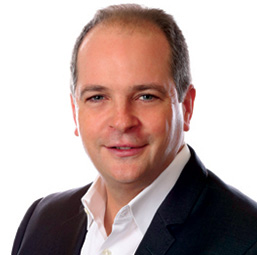 SAN DIEGO – ResMed has “five lines of work” to pump more of its CPAP devices into the market amid ongoing supply chain challenges, including a new AirSense 10 card-to-cloud device, says CEO Mick Farrell.
SAN DIEGO – ResMed has “five lines of work” to pump more of its CPAP devices into the market amid ongoing supply chain challenges, including a new AirSense 10 card-to-cloud device, says CEO Mick Farrell.
The company has launched the device – which is “basically an AirSense 10 without the cell chip in it,” says Jim Hollingshead, president, Sleep and Respiratory Care Business – only in select markets, but it’s in the process of adding markets.
“Look, this is a humanitarian emergency right now,” Farrell said of a backlog that will likely persist for another 12 to 18 months. “We have a competitor out of the market and there's not enough comms chips to go around the world. We looked at this and said, ‘Well, look, why don't we go to where we were before, which is a great technology of card to cloud.’”
What the card-to-cloud device lacks, of course, is the “daily cloud uploaded data and a wireless system,” Hollingshead acknowledges, leaving it to providers to upload data from the card into the cloud, something that likely won’t happen every day.
But ResMed has launched “a renewed and better version” of the process, Hollingshead says, and once data is uploaded to the cloud, physicians and providers can still use AirView to manage patients, and patients can still use myAir to manage their therapy.
“The main rationale behind it is we want to make sure patients get on therapy,” he said. “There's a growing patient backlog. We can produce these devices at volume.”
This temporary step back is necessary, ResMed officials say, with supply chain challenges expected to drag on. In the third quarter, the company had to lower its total expected incremental device revenue from the recall by $100 million to $200 million to $250 million, largely due to a “double-digit de-commit” from a chip supplier that has significantly affected production.
“I never heard that word de-commit,” Farrell said. “You've got a signed contract. You're offering money, very good margins (and) long-term contracts. And people just can't supply – often force majeure and other aspects are coming into play. But I can tell you that all the work that we've been doing, this hard work by our supply chain, has allowed us to actually to achieve these results despite that headwind.”
Those results* include a 30% increase in device sales in the United States, Latin America and Canada in the third quarter of fiscal year 2022, and a 7% increase in masks and other accessories.
“Our team has done a great job and the supply that we're going to get throughout this calendar year will be a great opportunity for sequential growth as we go through (the year),” Farrell said.